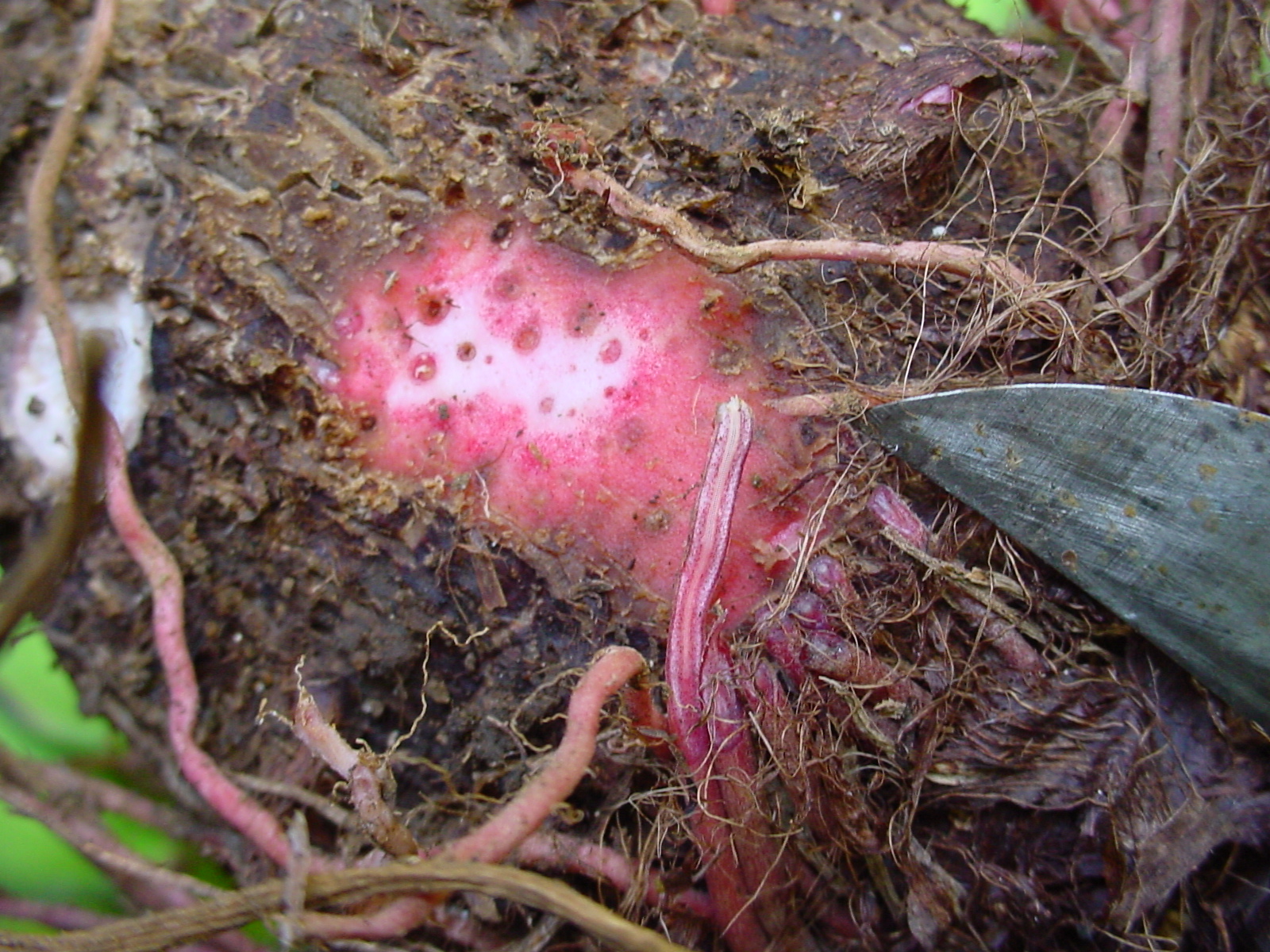|

Pi’i Ali’i . (PEE - EE AH – LEE – EE)
This one of the oldest taro varieties grown, and
was known in the early days of Hawaiian history as one of the royal taros. Commercially it makes a "red" poi (purple, not
gray) that is highly prized. The leaf is also very tasty.
The best thing about Piialii is the way it cooks
in the oven. Most taros tend to be too dry in the mouth to just bake and eat. Piialii bakes up almost as juicy as a good sweet
potato. It looks great baked too, sort of purple instead of white. It has a delicious flavor. It is so unusual you can serve
it as a pupu or even as a desert.
However, Piialii is one of the trickiest to grow.
It seems to like colder water for its roots (use a bigger water container and shade it) and sometimes it gets more aphids
and scales (grow it on a table so you can keep the ants off). It can look kind of beat up. Since you usually grow it for its
corms, it takes about a 9 month growing season, and the last 3 of that it is small and dormant.
Piialii is most easily recognized by its leaves,
which make a cup. The leaves remind me of an upside down umbrella, sort of crinkled. There are other varieties with cup leaves.
Of these, Piialii is the only one with the purple coloration in the roots. The inner skin of the corm is red, and the stem
just above the roots is a pretty lilac color once you start peeling the old leaves away. When you cut the stems or corms,
a striking blood red liquid oozes out.

The cleaned corm (from
Jim Hayes’ Manoa patch) also shows the coloration. This one was baked. (It did not turn out the juicy purple way –
it was like regular taro – fine but a little dry. I don’t know why some do and some don’t.)
Kakakura Kahuku (I don’t know the real variety name. I call it
KK for short for now. I think it is bred from a taro from Palau.)
This is a relatively new variety, by some pretty akamai guys, and it is doing
well in the leaf market. Beautiful picture to right is by my taro cruising buddy Isabella Gioia.

Here is their fine product. I have been
buying it for years at the Manoa Safeway, and always thought it was bun long. (The leaves look quite similar with purple piko.)
I like it better than bun long, but that could just reflect the good healthy plants these guys produce.
For leaf production this KK variety has the advantage of constantly
turning itself over, so you get a nice big leaf. I have just started testing it in my home garden.
On to growing for corms
|